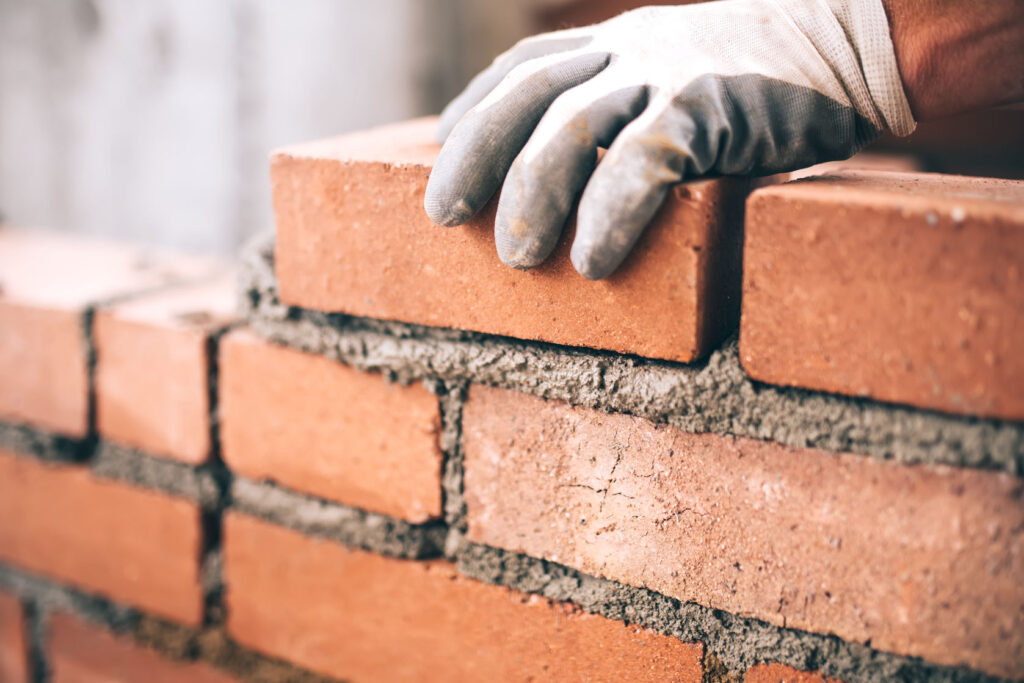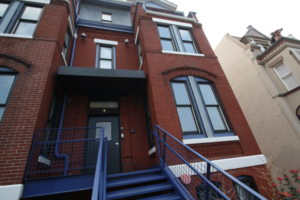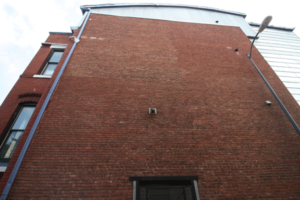Tuckpointing and Repointing Mason Northern Virginia

Free Estimate Request
Fairfax contractor has over 35 years of experience repointing homes and commercial buildings in Northern Virginia. Many of the commercial buildings that were built before 1920 require constant maintenance on their brick façades. If they are older, they may have been built using bricks and mortar, which is deemed substandard in today’s masonry construction. Repointing a commercial or residential structure takes great planning, especially in a historic district. The first step in preparing the bricks for any restoration requires carefully looking at the mortar joints to determine what type of mortar was used originally. The second most important consideration is how the building will be scaffolded when the actual remodeling project gets underway. Fairfax Contractor is one of Virginia’s premier masonry contractors that has extensive experience in restoring both architectural and historic brick buildings. We offer the skill set and the Masons that can take any repointing project to the finish line. For a free consultation, please click above or call 703-725-7945 for a complete evaluation of your property.
Free Estimate Request
Types Of Mortar For Tuckpointing and Repointing
 What is mortar, and exactly what different types of mortar are there? Mortar, as we know it today, is a combination of 3 elements the element is Portland-based cement, the second is fine masonry sand, and the last element is clean water. Mortar is manufactured in different strengths for different uses their strengths are rated by various letters dictating their cured PSI. The system in rating mortar is based on the words MaSoN wOrK which every other word is used. M stands for type M cement rated at 2500 PSI, S stands for type S cement, N stands for type N cement, and so on. Type S cement at 28 days is rated 1800 PSI when completely cured and hydrated. Most tuck pointing jobs involved using type K cement or type O cement. At 28 days, type cement K is rated at 350 PSI.
What is mortar, and exactly what different types of mortar are there? Mortar, as we know it today, is a combination of 3 elements the element is Portland-based cement, the second is fine masonry sand, and the last element is clean water. Mortar is manufactured in different strengths for different uses their strengths are rated by various letters dictating their cured PSI. The system in rating mortar is based on the words MaSoN wOrK which every other word is used. M stands for type M cement rated at 2500 PSI, S stands for type S cement, N stands for type N cement, and so on. Type S cement at 28 days is rated 1800 PSI when completely cured and hydrated. Most tuck pointing jobs involved using type K cement or type O cement. At 28 days, type cement K is rated at 350 PSI.
The reason behind using hydrated lime to create a lower PSI for cement used in tuckpointing is the older brick used in buildings was much softer than current brick standards. The more Portland cement used in mortar makes the blend stronger, but in turn, if you’re working with historical brick tuckpointing projects. It’s important not to use too strong of a mortar. If too strong of a mortar mix is used in your re-pointing project, it can lead to the destruction of the original brick on your commercial or residential building’s façade. When mortar has high compressive strength, it will make the brick face spalled off with no real hope of recovering from the damage. The mortar used in repointing brick should be equal to or lesser than that compressive strength or less than the original mortar used in the construction and laying of the brick. For example, lime is the key because, before Portland cement, lime and sand were used to lay brick. Older brick is much softer than brick being manufactured today, so it’s important to use a mortar blend with a lower PSI rating when tuck pointing older buildings. Typically, Fairfax contractor uses type N for newer residential tuckpointing jobs on homes built after the 1930s. But if your residential or commercial building is older, then great consideration needs to be taken when choosing what type of mortar is to be used to re-point the brick façade of the building. These considerations consider the type of lime to Portland ratio and color of the mortar that will be used to replace the old worn joints.
Why Is Repointing Brick So Expensive
 The reason that repointing brick in your home or your commercial building is so expensive is that it takes an artisan to replicate the color, the joint, and the type of mortar that was originally or historically used in the façade of your home or commercial building. The second reason is tuckpointing is very labor intensive. The first step is to determine how your home or building will be scaffolded so that the Masons can cut and repoint all the joints in the brick. If more than 50% of the brick in your building home needs to be reported, it’s probably wise to re-point the entire structure. Any contractor that operates in Virginia must first hold a contractor’s license issued by the DPOR, and Fairfax Contractor holds a class A RBC Residential Building Contractor (CBC) Commercial Building Contractor In addition, we have both Workmen’s Compensation insurance and complete general liability insurance that is up-to-date. Many commercial buildings will need to consider that the sidewalk may be closed or partially closed during the repointing of the façade of the building. These permits are not only time-consuming to procure but also expensive. Taking into consideration that restoring a brick façade on a home or a building requires the utmost skill and artistry of a competent team of masons will tell you that this project is not going to be inexpensive.
The reason that repointing brick in your home or your commercial building is so expensive is that it takes an artisan to replicate the color, the joint, and the type of mortar that was originally or historically used in the façade of your home or commercial building. The second reason is tuckpointing is very labor intensive. The first step is to determine how your home or building will be scaffolded so that the Masons can cut and repoint all the joints in the brick. If more than 50% of the brick in your building home needs to be reported, it’s probably wise to re-point the entire structure. Any contractor that operates in Virginia must first hold a contractor’s license issued by the DPOR, and Fairfax Contractor holds a class A RBC Residential Building Contractor (CBC) Commercial Building Contractor In addition, we have both Workmen’s Compensation insurance and complete general liability insurance that is up-to-date. Many commercial buildings will need to consider that the sidewalk may be closed or partially closed during the repointing of the façade of the building. These permits are not only time-consuming to procure but also expensive. Taking into consideration that restoring a brick façade on a home or a building requires the utmost skill and artistry of a competent team of masons will tell you that this project is not going to be inexpensive.
Color Matching Mortar For Tuckpointing
Once we have scaffolded your project OSHA standards, we will start cutting out all the old mortar joints. Typically, if 30% to 40% of the wall needs to be re-pointed, it probably makes sense to do the entire wall. To re-point. Brickwork and it needs to get at least a 70% embedment into the old brick by removing that bad mortar or lime and sand mix, depending on the age of the building. Working in small areas, because you don’t want to get ahead yourself, the mortar is carefully removed by using an angle grinder with a diamond wheel. What separates a semi-pro from an artisan Mason intact pointing is matching up the old mortar to a T. This is critical for several reasons. One of the buildings may lie within a historic district, and the history department in your particular city or county may require that the exact match of mortar is used in the repointing project. Often it’s wise to use a premixed blend of Portland line that’s been pre-colored, such as Essrock Brixment this bag blend is very convenient because of its consistency when tuck pointing large brick areas. Often a good Mason will have to hand mix different batches to create a color very close to the original mortar color used when building our home. This is difficult because the mortar has now become aged, and more of the sand has been exposed through acid rain is true takes some artistic skills and a great eye for color.
Replacing Broken Or Cracked Bricks
